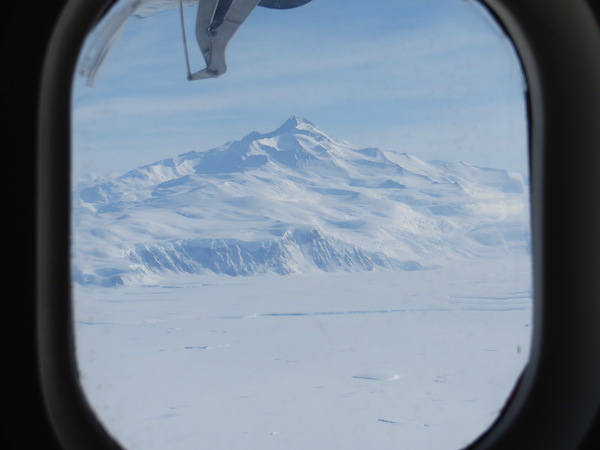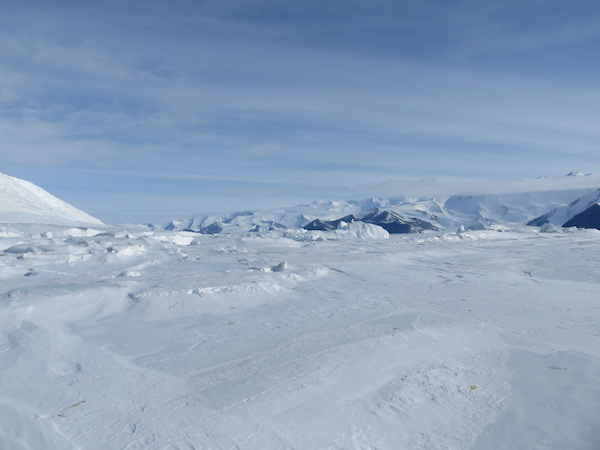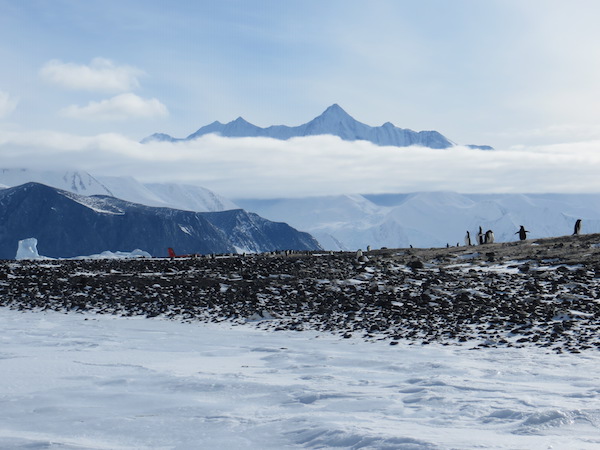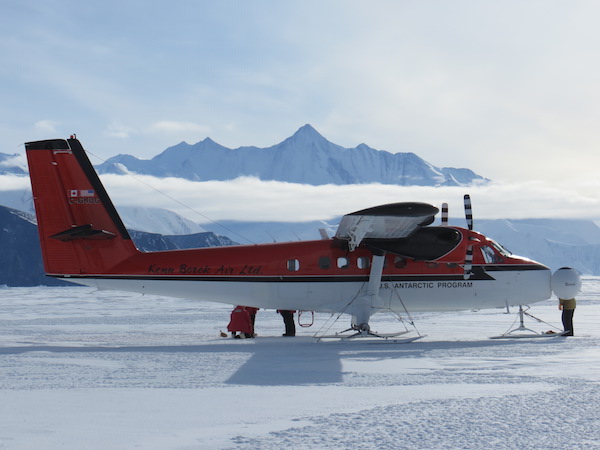Antarctica is a harsh continent.
It’s harshness comes in many forms. Some are obvious: the cold, the wind, the seclusion. Others manifest themselves through seemingly benign circumstances.
Mark and I went to Cape Hallett this past Monday, 26 October, to switch the transmissions on our AWS from Argos to Iridium. Iridium enables us to send more data real-time, making it more convenient to obtain and study the data measured by Cape Hallett’s many instruments. Before our trip, we needed to update the program on the CR1000 data logger to accommodate the Iridium modem. In McMurdo, we did this and went through hours of testing to get the modem to transmit. Finally, we got it. We felt ready to visit one of the most beautiful places in Antarctica.

View of McMurdo Station from the Twin Otter on our way to Cape Hallett. It’s still a snowy scene this early in the season.
Even the flight to Cape Hallett is beautiful. We flew by Twin Otter and had the frozen Ross Sea to our right and the Transantarctic Mountains to our left as we headed due North from McMurdo. With us were three people from the Environmental department who were coming to pick up trash that has remained at Cape Hallett since the United States-New Zealand manned station there closed in 1973. For a couple of them, it was their first Twin Otter flight, and I think they were spoiled.

The Environmental Crew, during our stop at the Cape Reynolds fuel cache along the way. From left to right: Ted Doerr, Anne Hellie, Nate Williams
The total flight time to Cape Hallett was about three hours. As we approached our landing site we began to fly among the mountains, rather than along them, as they welcomed us to our three and a half hour visit.
The plane circled once then landed on sea ice. Mark and I got our gear, including a ladder, and walked to Cape Hallett AWS on sea ice and around the penguin rookery. It was about a 25 minute walk and was quite tiring since we were carrying all of our gear. We couldn’t land closer to the AWS because the sea ice was very bumpy; it would have been very dangerous to try to land on it.
Once at the AWS, we got to work installing the new Iridium antenna and wiring the Iridium modem to the data logger. Though wiring in the field isn’t optimal, the work was relatively easy, and within about a half hour we had everything connected, mounted and ready for transmission. We used our Iridium satellite phone to call back to McMurdo to see if the transmissions came through, i.e. an email was sent from the modem. We got confirmation that an email was sent, so we assumed everything was all set to go. We then enjoyed some of the scenery and headed back to the Otter.

Cape Hallett AWS before we began our work. The Argos antenna is the white rod pointing vertically at the top of the AWS.

Anne Hellie took some great pictures of us as we worked. You may be able to see penguins on the light brown section of land, and on the right side of the picture the Twin Otter tail is just visible.
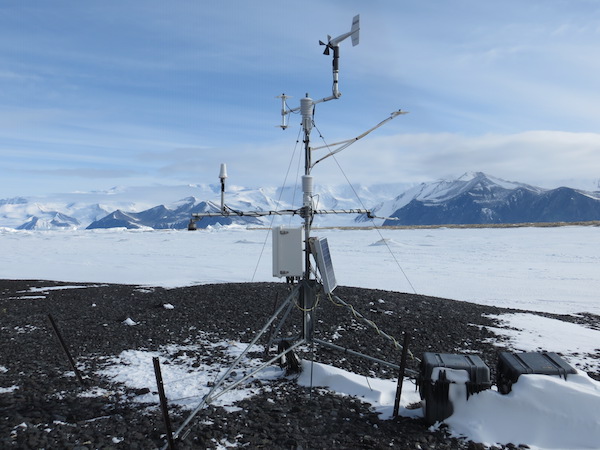
Cape Hallett AWS after our work was completed. The Argos antenna was removed, and the Iridium antenna was mounted on the lower cross arm, on the left side.
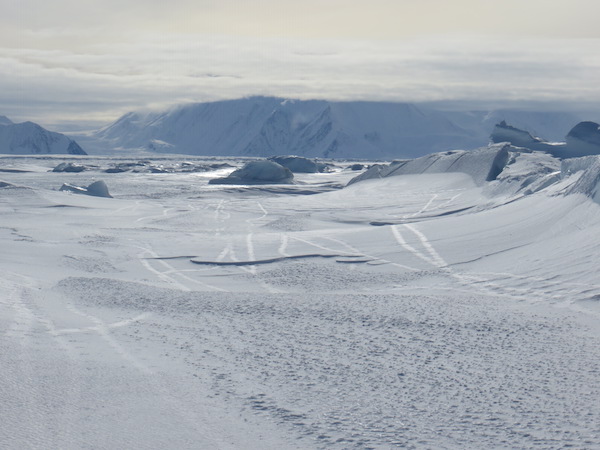
We saw many penguin tracks in the snow, mostly of their claws. We assume that these are tracks of their bellies as they slide on the surface.
After all the pictures were taken and everything was packed back into the plane, we headed back home to McMurdo. We got back into town around 8 pm, and I checked my emails to see the transmissions that I expected to be coming from Cape Hallett AWS every 10 minutes since we installed the modem. The emails were there, but to my dismay there weren’t any data with them. The email contained a simple status check and coordinate update, but data were supposed to be in an attachment. It turns out that the program we uploaded to the data logger was trying to send too much data through the modem, so the modem didn’t send any at all.
And therein lies the harshness of Antarctica.
What was a pleasant and simple visit turned into something that was too good to be true. After all, how often does something work on the first try in the field? Granted, this issue isn’t Antarctic centric; any field work is subject to mistakes such as this. When Mark and I were testing the Iridium modem in the lab before our flight, we ran into issues with getting it to simply transmit anything. Once we solved that issue, we didn’t notice that data weren’t being transmitted. Unfortunately, it took a flight to Cape Hallett to realize that.
Ever since we returned from that visit, we’ve been working on adjusting the program, testing the modem and re-testing it to work in multiple scenarios. We have been on the Twin Otter schedule, as backup, so when we do get back to Cape Hallett, we are confident that we can get the transmissions to work. We have two new modems that we’ve been testing and three new programs that we’ve proven can transmit data.
Now we’re waiting on our chance to get back out there.


